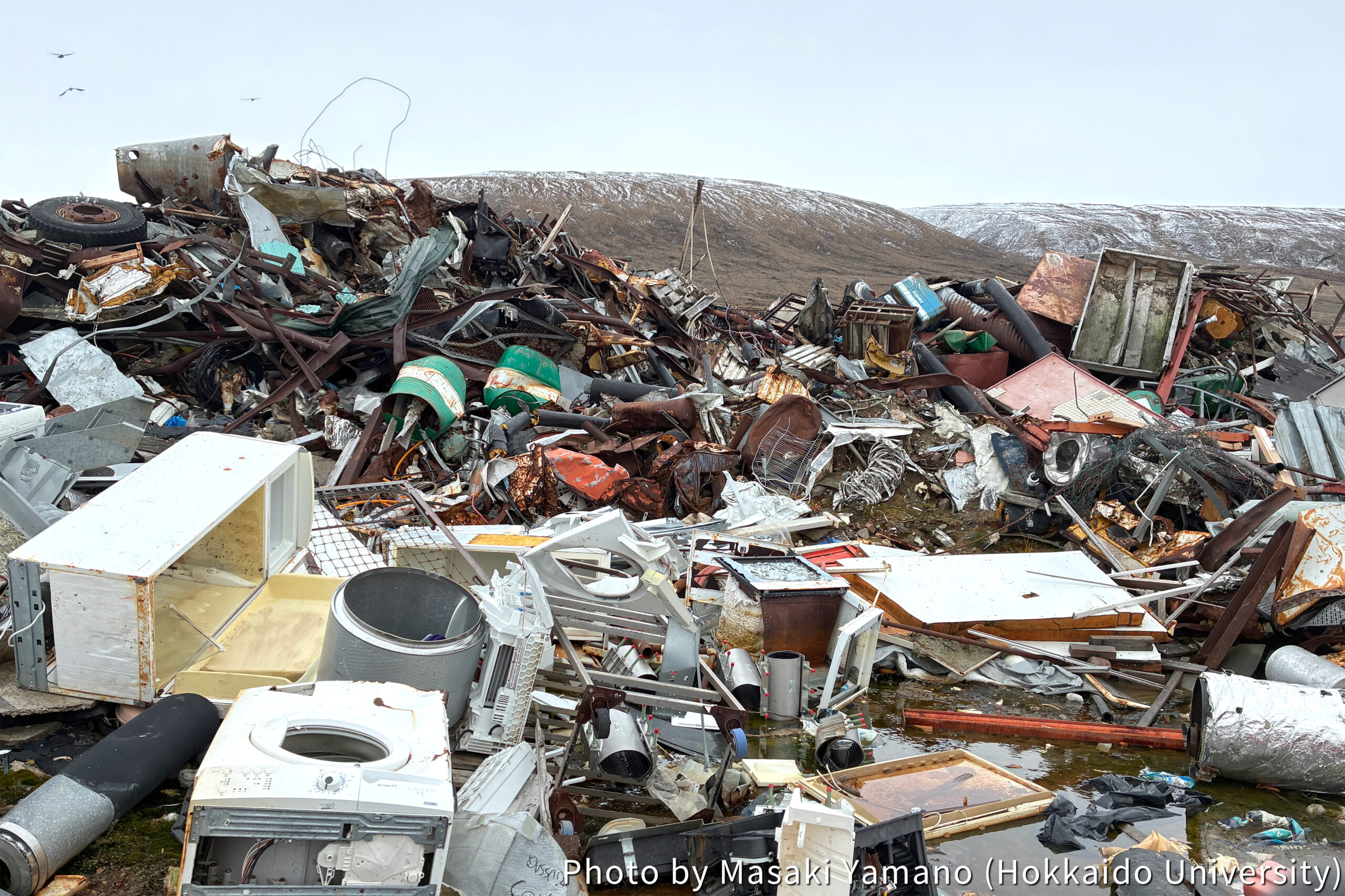Release date
Understanding the current state of environmental pollution surrounding blue mussels in coastal communities in Greenland and sharing the finding
Post Date:
Author:Masaki Yamano (First-year Master’s Student, Graduate School of Fisheries Sciences, Hokkaido Univ.)
From to , I conducted blue mussel (Mytilus edulis) sampling, observations using various sensors, and questionnaire surveys in the villages of Qaanaaq and Siorapaluk in northwestern Greenland to assess the current state of environmental pollution surrounding blue mussels. Mussels are native to the Mediterranean Sea, but due to recent global changes in the marine environment, their habitat has shifted northward, reaching as far as northern Greenland. While blue mussels are sometimes used as local food in coastal communities, there are concerns about heavy metal contamination of blue mussels from coastal garbage dumpsites (Photo 1) and the resulting health hazards.
During my stay, I was able to collect mussels at multiple locations, including near the garbage dumpsite and along the river flowing through center of the Qaanaaq village. I plan to measure the concentrations of heavy metals such as cadmium and mercury in the collected mussels and examine the differences between sampling sites. In addition, I recorded data on the opening and closing movements of mussel shells using sensors (Photo 2). Also, I photographed the movement of water, such as the river flowing through the dumpsite and the tides of the sea, as well as animals such as birds and dogs entering and leaving the dumpsite (Photo 3), and investigated soil contamination around the dumpsite. Furthermore, we were able to collect information on how local people collect and eat mussels through a questionnaire survey, and share the analysis results from the previous year on the possibility of mussel contamination at a workshop.
This expedition provided invaluable experience and data thanks to the support of the ArCS III International Early Career Researchers Program. I extend my heartfelt gratitude to all those involved who supported this research.




